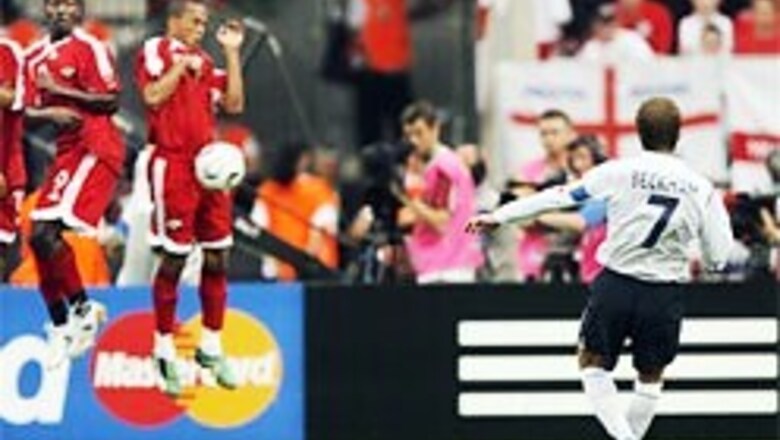
views
Washington: Beckham’s absence in the last moments of the crucial quarter-final clash against Portugal cost England the match, because none of his boys could bend it like him.
Well if a new software technology is anything to go by, each one of his boys could improve their skills to kick and bend the ball the way their captain does.
Researchers claim to have developed QuinSpin, an automated system that uses a specially designed soccer ball along with cameras and software, which they say could help coaches analyse their players’ skills by providing quantitative rather than qualitative data.
They said the system provides coaches with hard evidence of how a player strikes a ball so that they can profile their development over a period of time and objectively measure how much the player has improved and what areas need to be worked upon.
"We're trying to provide coaches with hard evidence of how a player strikes the ball. We can profile a player's development over time, so that the coach can objectively measure if the player is improving," said Paul Neilson, director of Sports Dynamics, a company from Loughborough University.
The system comprises of four main components: a soccer ball with a unique arrangement of 50 blue and yellow dots; a stop-action camera and synchronized flash; a video to capture the action in slow motion; and an image processing software that compiles the data into graphs and charts.
To use the system, a player positions the ball approximately 1.5 meters from the unit. The camera takes a static image of the ball before it is kicked.
The player then kicks the ball and a microphone in the unit detects the impact sound. This sound activates the camera to take a second image just a few milliseconds after the ball is kicked. The video camera captures the action and produces a slow-motion replay, reports Discovery News.
As the ball flies through the air, the pattern of coloured dots changes position. The camera picks this up and the image processing software analyses how the pattern changes from beginning to end.
In only five seconds, information about the ball's speed, height, its spin, the speed at which it is spinning and the orientation of the spin during the flight are displayed on the computer screen.
Researchers say QuinSpin can help coaches understand why a long shot is not going long (it doesn't have enough back spin); or why a corner shot didn't bend (it didn't have enough side spin).
The system can be used indoors as well as outdoors to capture objective, real-time measurements of ball speed, elevation, spin rate, and spin axis.
"They've got a very impressive piece of technology," said sports engineer Matt Carre, a lecturer at the University of Sheffield, however adding that the system would be more useful if it incorporates a trajectory program that might predict where the ball might go and how it might behave.
"Players will not necessarily want to know how the ball is spinning or how fast it is travelling. Instead, They would want to know if it's going to go in goal or go over a defensive wall of players, or curve in a way that will confuse a goalkeeper. It's like trying to tell Andre Agassi he's hitting the ball at 152 miles an hour," Carre added.
Neilson said as of now, the company was working on a simulator that would provide a graphical representation of the likely trajectory of the ball and it will be incorporated into future versions of the software.




















Comments
0 comment